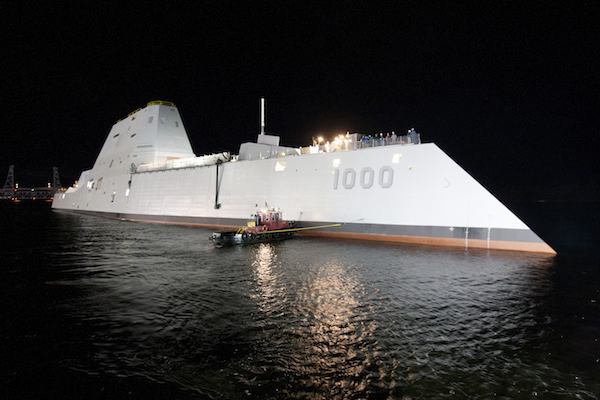
[Image above] New and improved armor windows could find application in deckhouse windows in the new class of US Navy destroyers, like the USS Elmo Zumwalt pictured here. Credit: US Navy, General Dynamics.
The US Naval Research Laboratory has developed a superior see-through ceramic nanocrystalline spinel, both highly transparent and strong, with ambitions to improve armor windows for military vehicles.
Using an enhanced high pressure sintering (EHPS) technique, NRL scientists beefed up spinel hardness by 50 percent over what is currently used in military armor windows.
“The EHPS approach uses high pressures (up to 6 GPa) to retard bulk diffusion rates, break powder agglomerates, and reposition nanoparticles very close to each other to help eliminate porosity in the sintered ceramic,” states an NRL press release. “NRL researchers then can exploit the increased surface potential of nanoparticles for surface-energy-driven densification without coarsening.”
The new technique did not decrease density or fracture resistance, as has been previously observed due to residual porosity in nanocrystalline spinel. The spinel also retained high transparency, a must for optical equipment on military vehicles.
While previous work has shown that the Hall-Petch relationship between strength and hardness falls apart for some ceramics below about 130 nm, the NRL research pokes a hole in the theory by maintaining strength and hardness in grain sizes down to 28 nm.
In addition to increased strength, armor windows from the spinel also could be produced cheaper. Current production of armor windows incorporates spinel with sapphire, which is expensive. Because the new-and-improved spinel is harder, it may be able to replace sapphire in future windows. The increased strength also means that new windows could be made thinner while retaining the same strength, saving material costs as well.
Sounds like a win all-around.
In addition to military vehicles, the press release also suggests “there could be other potential DoD and civilian applications in better/stronger office windows, smartphones and tablets screens, military/civilian vehicles, space vehicles, and even extraterrestrial rovers.”
The paper, published in Acta Materialia, is “An extended hardness limit in bulk nanoceramics” (DOI: 10.1016/j.actamat.2014.01.030).
